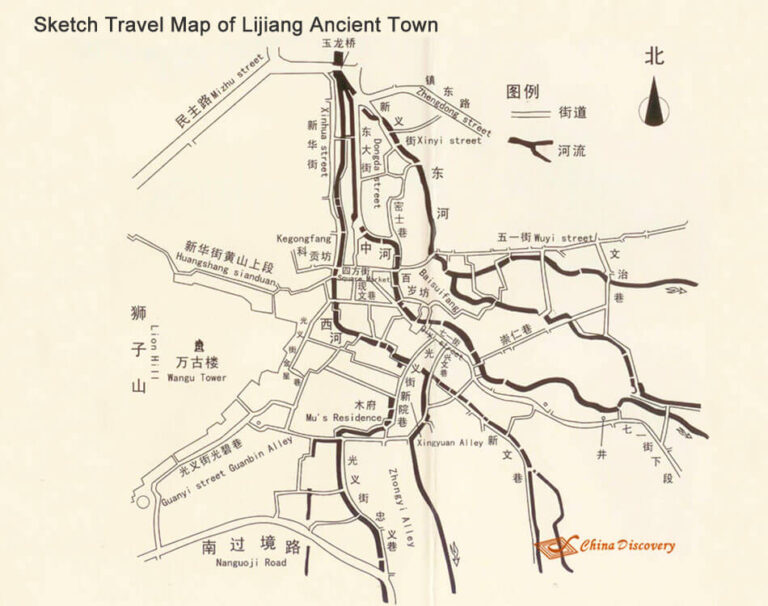China
Lijiang
Forget about time and space in the UNESCO old towns of Lijiang in southwest China, and chill in the instagram-ready cafes and bars
FULL ITINERARY
- Old Town
- Culture
- Traveled in July 2019
Day 1
Lijiang Old Town
Explore the most popular old town in Lijiang and soak in its history and live music scene at night | Overnight in Lijiang
9:30 am
Mu's Palace
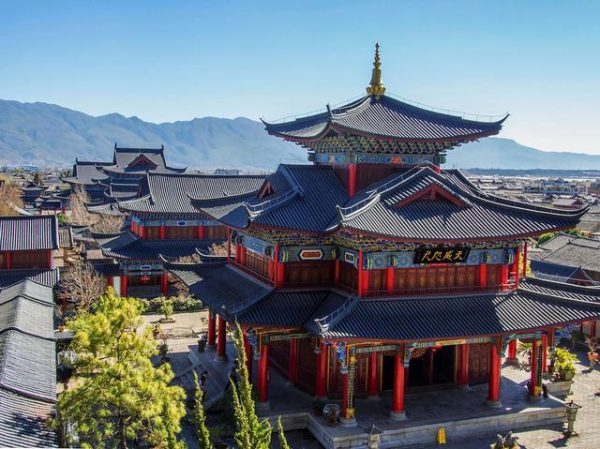
There are multiple entry points into the old town. Suggest you start from the southwest side and visit the places with limited opening hours first.
Mu’s Palace is the residential palace of the ruling family Mu for generations until the 18th century. It’s said to be a must-visit in Lijiang and some even compare it to the Forbidden City in Beijing. However, this place was completely reconstructed recently, and we did not feel it worth getting a ticket for something that lacks authenticity.
- Visiting Information
The palace is open 8:00am-5:30pm. Ticket costs RMB90 at the gate.
11:00 am
Wangu Pavilion
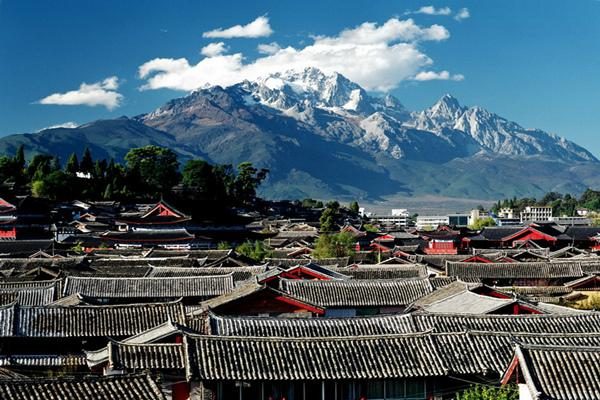
Besides being a landmark tower on top of Lion Mountain, this is the best place for a panoramic view of Lijiang. There is a road at the back of Mu’s Palace to take you directly here. You need another ticket to get in.
- Visiting Information
Opening hour is 8:00am-5:00pm. Ticket costs RMB45
12:00 pm
Lunch
1:30 pm
Old Town Walk
The best way to explore Lijiang Old Town is to get lost in it and relax in cafes and bars. The crowds can get crazy sometimes so even more reason to escape from them by going inside the wooden houses.
Giant Water Wheels
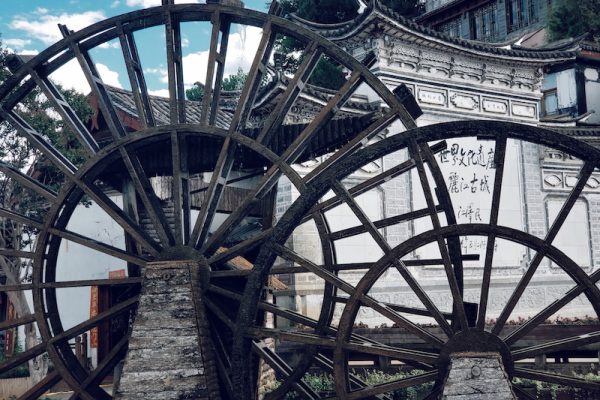
This is the main entrance. Although the water wheels were built for tourists, it’s still worthy of a brief stop. Behind them is the calligraphy from the then Chinese president Jiang Zeming when Lijiang Old Towns made it to UNESCO in the 90s. I still remember what a novelty this place was back then and people thought they’ve discovered a hidden gem. Now it’s built out like a theme park.
Sifang Street
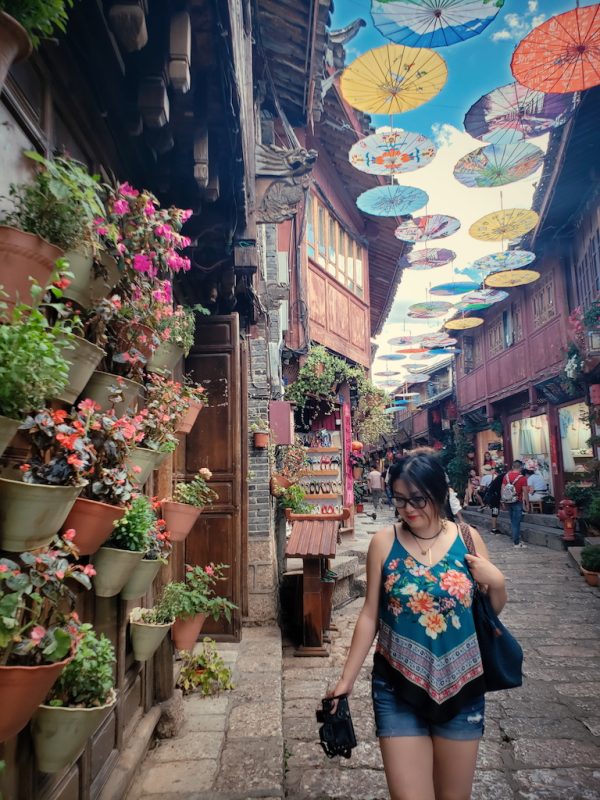
This is the town center with Naxi women dancing in the day and bonfire at night. The crowd is horrifying. However, this is the easiest point to navigate the old town in all directions. You’ll find many of the prettiest alleys converging here. One example is the instagram-ready “umbrella street” to the south of the square where colorful paper umbrellas are hung overhead (look for Guangyi Street Xianwen Alley).
Wuyi Street and Qiyi Street
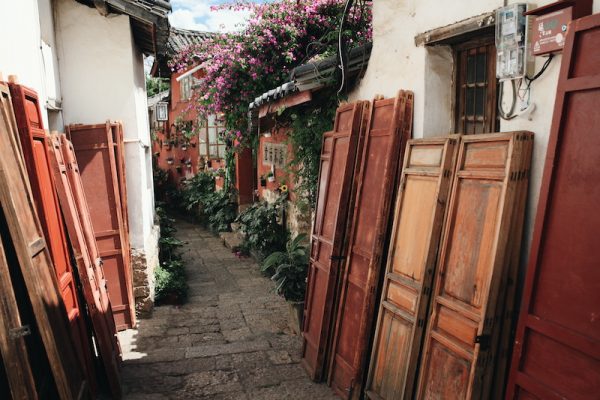
These are the main streets bustling with local eateries and craft shops. Be sure to explore the unnamed back alleys. Follow Wuyi Street to the far end of the town and you’ll find peace and serenity like how this town is supposed to be.
Xinhua Street (Bar Street)
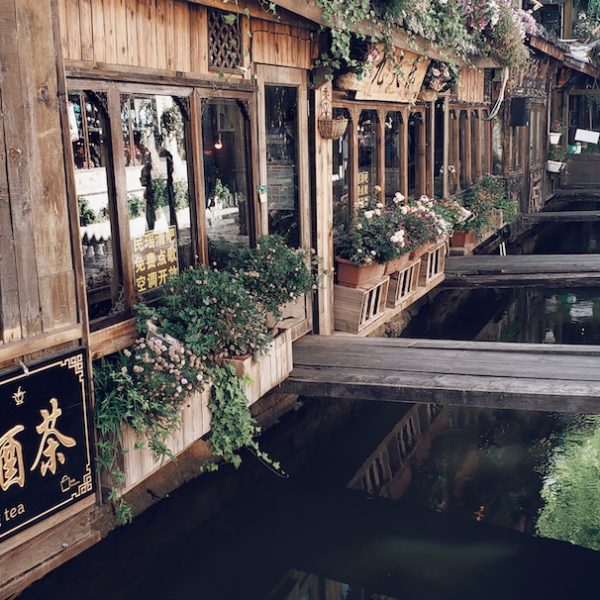
Possibly the most beautiful area in the old town it’s almost a sin not to linger. Come here at night if you like to party. Come here in the afternoon if you like to chill. I suggest you focus on this area towards the end of the day so you can get the flavor of both day and night. Nursing an overpriced cocktail, watching people watching you, it’s quite a scenery to be in.
6:00 pm
Dinner
8:00 pm
Live Music
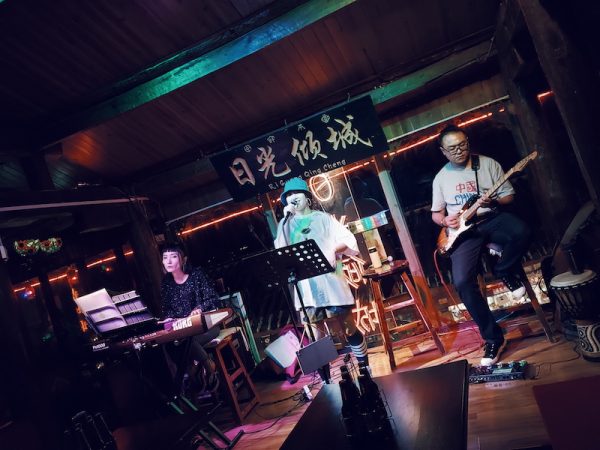
There are two types of bars in Lijiang – a “party” type (嗨吧) and a “quiet” type (清吧). Both overcharge lousy cocktails but there’s something real cool about being in wooden traditional houses while enjoying something hip and indie. The Lijiang bar scene is so famous you almost can’t come here without experiencing this. It’s the birthplace of the chic “old town bar” districts now so popular all across China.
From dusk, Wuyi Street becomes home to some of the best live music in town. The voices hung in air would sometimes struck me breathless as I walked. They were that good. Wuyi Street and the Bar Street are both full of bars and live music, but I think the establishments on Wuyi Street are a lot more serious about music than those on Bar Street. Some of the bars here are even run by musicians.
By the way, all live music is banned from 11pm in the Old Town. Though I heard many of them just go unplugged. The show goes on offstage and the party never ends.
Day 2
Baisha Old town & shuhe old town
Explore the other two old towns in Lijiang with much more serenity and sample some Pu'er tea in traditional tea ceremony | Overnight in Lijiang
10:00 am
Baisha Old Town
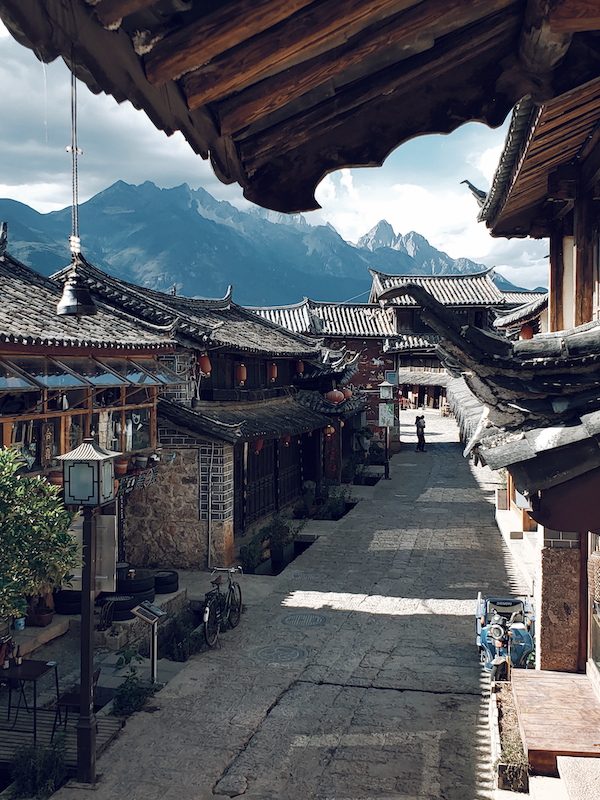
A total gem only 30 minutes’ drive away from Lijiang Old Town. It was almost empty when we were there but to me, this was the very best of the Lijiang Old Towns.
The town center is small. Much is still occupied by local families in their actual homes, which is how a real old town should be. I love the residential vibe here that spoke of a much greater authenticity and serenity to me.
Naxi locals chilled on the sidewalk speaking language I couldn’t understand. Couplets are hung at every door following a tradition long lost in China’s urban parts. At a rooftop cafe, we had the breathtaking view of the old town against a backdrop of Jade Dragon Snow Mountain all to ourselves.
Sure you can finish “sightseeing” of this old town in less than an hour. But this is where I truly found what I came to Lijiang for. We spent hours in two rooftop bars just to be here. We wanted to stay even longer if not for the owner “kicking us out”, because he was concerned that it may not be easy for us to get a taxi back after 6pm. He wasn’t even in the store when we took off and he didn’t seem to worry about anyone skipping bills. It was that kind of neighborhood. Being in China, it’s almost unreal.
12:00 pm
Lunch
1:30 pm
Shuhe Old Town
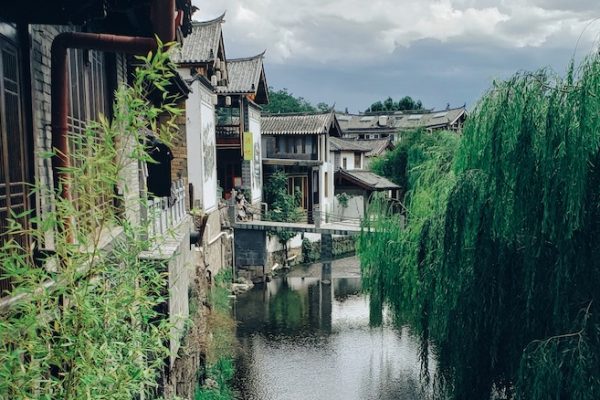
A dialed down version of Lijiang Old Town, Shuhe Old Town is yet another popular spot to enjoy the traditional setting and laid-back atmosphere.
The main sites to visit are Qinglong Bridge, Jiu Ding Dragon Pool, Sifang Street, and the canals along the way. It was a bit underwhelming compared to what I felt in Baisha Old Town. It’s a popular spot – not as well developed as Lijiang Old Town but not as serene as Baisha. To some, this may be just the right mix.
4:00 pm
Tea Tasting
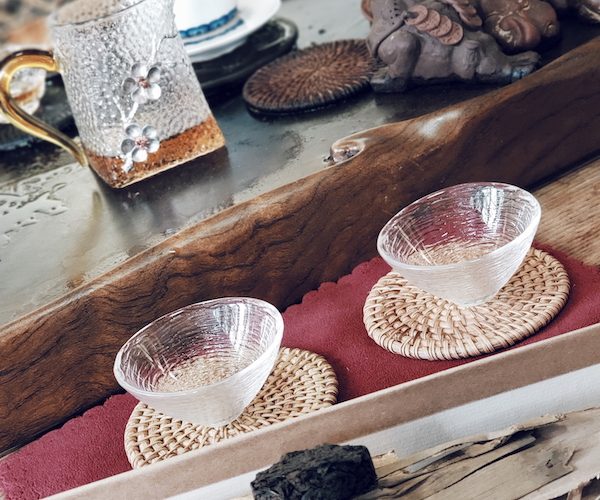
A trip to Yunnan would not be complete without sampling some Pu’er tea.
It’s a well-known type of tea with a distinct flavor that can only grow in Yunnan. Since the ancient times, this region supplied imperial court with high end tea and has thrived on tea trade. Due to its elevation and climate, this is the only place in China that can cultivate the much treasured “ancient tree tea” – harvested from trees over a hundred year old.
Be careful though, a tourist town is not the best place to buy high quality tea. The tea ceremony may be interesting, but many teashops may scam you with low grade or even used tea. Look for the genuine sellers off the main roads or have your guesthouse recommend some to you. We spent 3 hours with a shopkeeper whose family has been making pu’er tea for generations. Message me if you’d like his contact.


